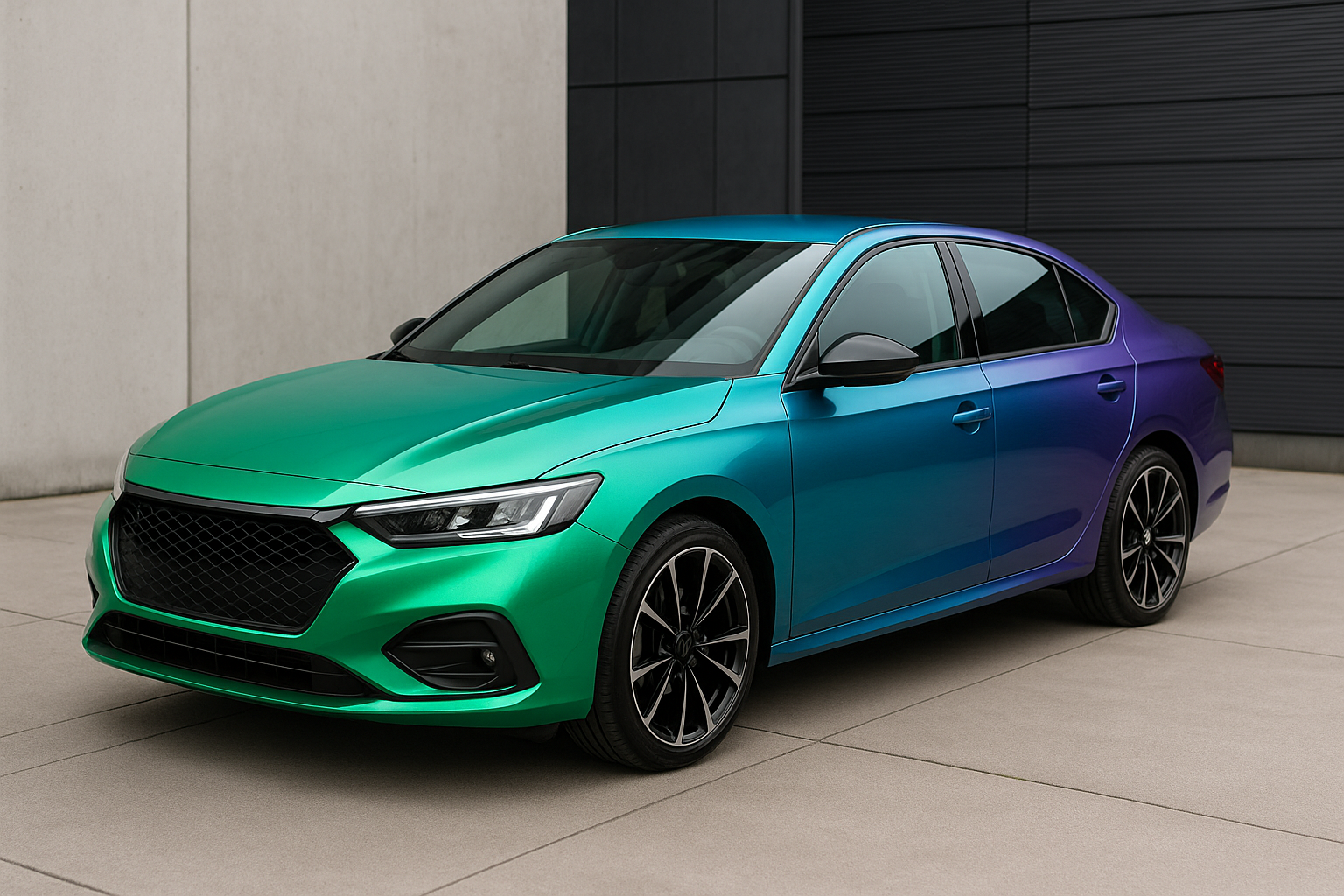Color Change Wrap Film: Transforming Vehicle Appearance and Protection
Color change wrap film has become a cornerstone in modern automotive customization, providing a versatile way to alter a vehicle’s appearance while safeguarding its original finish. More and more car owners and businesses are turning to this solution, as it combines style, practicality, and affordability in one application. Unlike traditional painting, wrap films deliver flexibility that matches today’s fast-changing design trends, making them a preferred option across both personal and commercial applications.
What Is Color Change Wrap Film?
Color change wrap film is a specially designed vinyl material that adheres directly to a vehicle’s surface. By applying it to the body panels, the vehicle can take on an entirely new look, ranging from subtle matte tones to striking metallic or pearlescent finishes. Unlike a permanent paint job, wrap film is removable, meaning the car’s original paint remains preserved underneath.
This type of film isn’t limited to aesthetics. It serves a protective function by shielding the surface from scratches, stone chips, and exposure to harmful UV rays. Many vehicle owners view it as a dual-purpose solution—upgrading the visual appeal while maintaining long-term paint protection.
Advantages of Using Color Change Wrap Film
1. Wide Variety of Styles
Color change wrap films come in a broad selection of finishes such as gloss, matte, satin, metallic, carbon fiber, and brushed textures. This variety allows drivers to express individuality and stand out on the road.
2. Removability and Flexibility
Unlike repainting, which permanently alters the surface, wrap film can be peeled off at any time. Whether the goal is to return to the factory color, switch to a new look, or prepare the vehicle for resale, removability adds unmatched convenience.
3. Paint Protection
The wrap acts as a shield against daily wear. Road debris, sun exposure, and minor abrasions can gradually damage paintwork, but with a protective film layer, the underlying surface remains intact.
4. Cost Efficiency
A full paint job requires significant investment and downtime, while color change wraps are usually more budget-friendly and faster to apply. The balance between affordability and visual impact is one of the key reasons for their popularity.
5. Commercial Branding Opportunities
Businesses often use wrap films to display logos, brand colors, or promotional designs on fleet vehicles. This transforms cars, vans, and trucks into mobile advertisements while simultaneously protecting the paint beneath.

Where Color Change Wrap Film Is Applied
Passenger Cars and SUVs – Car owners often use wraps to refresh the look or achieve a unique finish not available from manufacturers.
Luxury and Sports Cars – High-value vehicles benefit from the protective element of wraps, ensuring that resale value remains high.
Commercial Fleets – Taxis, delivery trucks, and service vans use wraps to maintain uniform branding and consistent company image.
Motorcycles and Boats – Wrap films are also effective in customizing motorcycles and marine equipment, offering both style and durability.
Interior Customization – Beyond exteriors, dashboard trims, panels, and interior accessories can also be wrapped for a refined look.
Popular Finishes in Color Change Wrap Films
Gloss – Delivers a high-shine, polished appearance similar to fresh paint.
Matte – Offers a modern, non-reflective finish that emphasizes sleek design.
Satin – Provides a balance between gloss and matte, creating a smooth, understated sheen.
Metallic and Pearlescent – Add depth and unique reflections, shifting under different lighting conditions.
Textured Options – Carbon fiber, brushed aluminum, or leather-like finishes appeal to those seeking distinctive details.
Installation Process
Proper installation of color change wrap film requires skill and precision. The surface of the vehicle must be thoroughly cleaned to ensure adhesion. Skilled professionals then apply the film panel by panel, carefully smoothing out air bubbles and ensuring accurate alignment.
Professional installers often use heat to help the film conform to curves and edges, ensuring a seamless finish. While some vehicle owners attempt DIY applications, the best results come from trained specialists who have the right tools and experience.
Maintenance and Longevity
Maintaining a wrapped vehicle is straightforward. Gentle hand washing is recommended instead of harsh chemicals or abrasive brushes. With proper care, high-quality wrap films can last several years, typically between three to seven years depending on exposure to sunlight and environmental conditions.
One advantage is that if a section of the film becomes damaged, only the affected panel needs to be rewrapped, rather than refinishing the entire vehicle. This makes ongoing maintenance easier and more economical than repainting.
Why Choose Color Change Wrap Film Over Paint?
While both painting and wrapping change the look of a vehicle, wrap films offer distinct advantages:
Reversibility – Easily removed without altering the factory paint.
Time Efficiency – Wraps can be applied in days, whereas painting takes longer due to prep and curing times.
Design Possibilities – More customization options, including patterns, gradients, and textures not achievable with paint.
Preservation of Value – Original paint remains untouched, keeping the car’s resale potential strong.
Conclusion
Color change wrap film represents a modern approach to automotive restyling. It merges visual transformation with practical protection, making it suitable for personal customization, luxury car preservation, and large-scale commercial branding. With finishes ranging from bold metallics to understated matte surfaces, the options are nearly limitless.
As more drivers seek personalization and businesses look for effective marketing tools, the demand for color change wrap film continues to grow. Whether for a complete vehicle transformation, a partial accent design, or simple surface protection, this technology offers a reliable and attractive solution. For anyone aiming to elevate appearance while keeping flexibility intact, color change wrap film delivers both creativity and functionality in one package.

 English
English русский
русский Español
Español عربى
عربى

